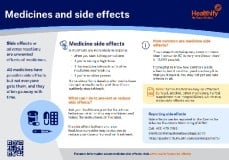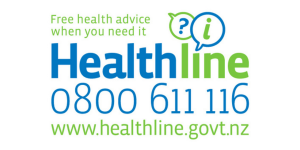Fulvestrant
Sounds like 'ful-VES-trant'
Key points about fulvestrant
- Fulvestrant is used to treat breast cancer.
- It's an option for women who have gone through menopause.
- Find out how it is given and possible side effects.

Fulvestrant is used to treat certain types of breast cancer, mainly for women who have gone through menopause. It can be used by itself or together with targeted therapies such as ribociclib or palbociclib, when hormone therapy hasn't worked well.
Rarely, fulvestrant may also be used in premenopausal women with metastatic breast cancer when oral hormone treatments such as tamoxifen or aromatase inhibitors haven't worked well. It's used together with targeted therapies and goserelin, to lower oestrogen levels.
Some breast cancers can grow because of the hormone called oestrogen. This is called oestrogen receptor positive breast cancer. Fulvestrant blocks oestrogen receptors on breast cancer cells and can also change the shape of oestrogen receptors in the cancer cells so the oestrogen can’t attach to them. This stops the cancer cells from growing.
Funding in New Zealand: In Aotearoa New Zealand fulvestrant is funded under a Special Authority, for people who meet the criteria. A special authority means your specialist will need to make an application to Pharmac (the government medicine funding agency) for approval before the medicine can be funded for you.
Between 1 December 2025 and 1 May 2026, your brand of fulvestrant will change from Faslodex to Fulvestrant EVER Pharma.
- Fulvestrant EVER Pharma has the same active ingredient in the same amount as Faslodex and is given in the same way (as an injection into the muscle in your buttock).
- Fulvestrant EVER Pharma is approved by Medsafe in Aotearoa New Zealand and is widely used in Australia.
- Fulvestrant EVER Pharma doesn't need to be kept in the fridge and can be stored at room temperature in its original packaging below 25 degrees celsius until you're ready to use it. Since it doesn’t need to be warmed before injection, it may help reduce discomfort or pain at the injection site.
- While Fulvestrant EVER Pharma is designed to work in the same way as Faslodex, small differences in inactive ingredients might cause it to feel or work a little differently for some people. If Fulvestrant EVER isn’t the right choice for you (for example, if you have a bad reaction), your doctor may be able to apply for funding for a different brand through a special Pharmac process called a Named Patient Pharmaceutical Assessment (NPPA).
- If you have any questions about this brand change, talk to your healthcare provider.
Learn more about the fulvestrant brand change(external link).
Getting your medicine
Your healthcare provider will give you a prescription for the fulvestrant. You'll need to take the prescription to a pharmacy, pick up the medicine before your appointment and remember to take it with you on the day of your appointment.
Fulvestrant is free if you meet the funding criteria, but you may need to pay for having the injection. You may also have to pay a prescription charge when collecting the medicine from the pharmacy.
Fulvestrant is given as an injection
Fulvestrant is usually administered at a specialist clinic, but some people may arrange to have it at their medical centre.
- Fulvestrant is given as an injection into the muscle in your buttock (bottom).
- For each dose you have 2 injections, 1 in each buttock. Each injection is given slowly over 1 to 2 minutes.
- You have the first 3 doses 2 weeks apart. After that you have the injections once a month.
Here are some things to know when you're having fulvestrant. Other things may be important as well, so ask your healthcare provider what you should know about.
Blood tests and monitoring
You may need to have blood tests while you are having this treatment. Your doctor or nurse will tell you when to have blood tests.
Hot flushes and sweats
These are a common side effect of fulvestrant. During a flush, your face and neck might feel warm. If you have lighter skin, your skin may turn red, and if you have darker skin, your skin tone may become deeper. Flushes can last for up to 5 minutes. You might also sweat or feel anxious or irritable while it happens.
To reduce hot flushes and sweats try wearing light clothes, such as cotton, or wear layers so you can remove clothes as needed. Use cotton sheets and layers of bedding you can remove. Keep rooms cool or use a fan and try cooling pads or pillows to keep you cool. Have cold drinks and avoid caffeine and alcohol.
If you experience these symptoms, talk to your healthcare provider. There are medicines that can help manage this side effect.
Taking other medicines
Fulvestrant can interact with some medicines and herbal supplements, so check with your healthcare provider or pharmacist before starting fulvestrant and before starting any new products.
Pregnancy and contraception
If you haven't reached menopause you shouldn't get pregnant while you're taking fulvestrant and for 2 years after stopping treatment. Talk to your healthcare provider which types of contraception are suitable for you.
Like all medicines, fulvestrant can cause side effects, although not everyone gets them. If you're concerned about any symptoms you think might be related to your medicine, talk to your healthcare provider. The following information offers some guidance but doesn't include all possible side effects.
Common side effects
Tell your healthcare provider if these side effects bother you.
- Stinging, pain, redness or bruising at the injection site.
- Hot flushes and sweats.
- Nausea (feeling sick) or vomiting (being sick).
- Fatigue (tiredness)
- Headaches.
- Muscle or joint pain.
- Sore mouth.
- Diarrhoea (runny poo)
- Skin rash or itch: Use soap-free cleansers and unperfumed moisturising cream daily.
- Feeling dizzy: Be careful when driving or using tools until you know how this medicine affects you. Don’t drink alcohol.
Tell your healthcare provider immediately or phone Healthline free on 0800 611 116 if these occur
- Signs of urine infection such as pain when you pee, peeing more often than usual, or cloudy or smelly pee.
- Numbness or tingling in your hands or feet.
- Signs of blood clots such as swelling, pain or change in colour in one or both legs, chest pain, difficulty breathing or shortness of breath.
Phone 111 for an ambulance or go to your nearest accident and emergency (A&E) clinic if these occur
- Signs of an allergic reaction such as itchy skin, and rash, swollen lips or tongue, problems breathing, like a tight chest or shortness of breath.
Read more about medicines and side effects and reporting a reaction you think might be a side effect.
Brochures
Medicines and side effects [PDF, 91 KB] Healthify He Puna Waiora, NZ, 2024
5 questions to ask about your medications(external link) Health Quality and Safety Commission, NZ, 2019 English(external link), te reo Māori(external link)
References
- Fulvestrant(external link) New Zealand Formulary
Brochures

Medicines and side effects
Healthify He Puna Waiora, NZ, 2024

Health Quality and Safety Commission, NZ, 2019 English, te reo Māori
Credits: Sandra Ponen, Pharmacist, Healthify He Puna Waiora. Healthify is brought to you by Health Navigator Charitable Trust.
Reviewed by: Healthify clinical advisors
Last reviewed:





